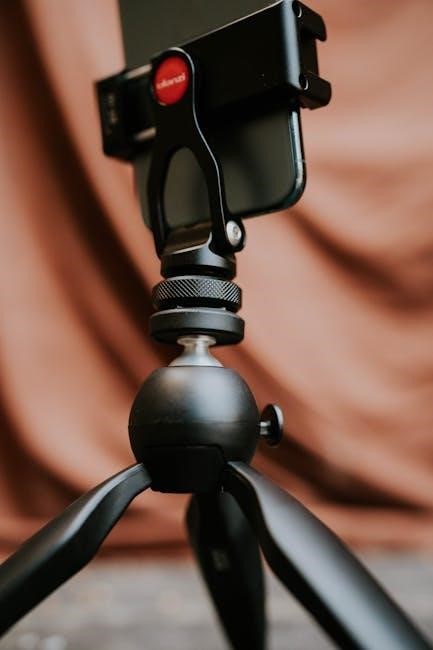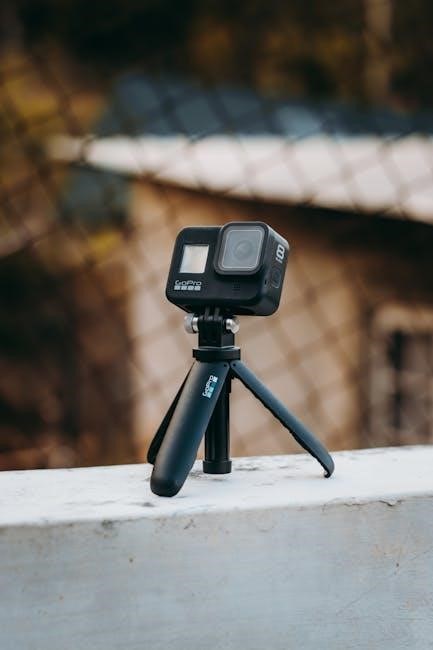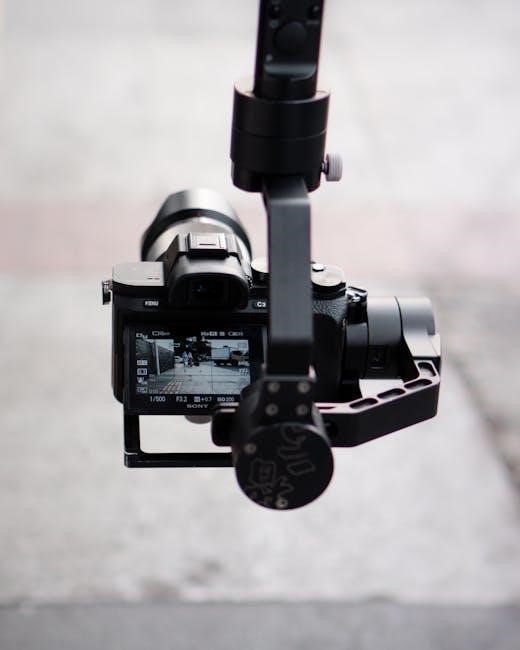
The StatLock Catheter Stabilization Device is a strap-free solution designed to secure catheters, reducing movement-related complications and improving patient comfort and safety in clinical settings.
Overview of the StatLock Catheter Stabilization Device
The StatLock Catheter Stabilization Device is a strap-free, securement solution designed to stabilize catheters, reducing the risk of displacement and associated complications. It is compatible with various catheter types, including Foley, arterial, and intra-aortic balloon catheters. Made from moisture-resistant materials, the device ensures patient comfort and safety, minimizing the need for frequent adjustments. Its innovative design provides a reliable alternative to traditional medical tape, enhancing clinical outcomes and patient care.
Importance of Catheter Stabilization in Patient Care
Catheter stabilization is critical for preventing complications such as dislodgment, infection, and thrombosis. Proper stabilization ensures continuous drainage, reduces catheter movement, and minimizes patient discomfort. It also lowers the risk of urinary tract infections and other associated risks. Effective stabilization enhances patient safety, improves clinical outcomes, and reduces the need for repeated medical interventions, making it a cornerstone of quality patient care in both acute and long-term settings.

Understanding the StatLock Device Components
The StatLock device consists of a retainer clamp and stabilizing pad, designed to securely hold catheters without straps, ensuring stability and reducing movement.
Key Features of the StatLock Stabilization Device
The StatLock device offers a strap-free design, eliminating the risk of skin irritation and discomfort. Its retainer clamp and stabilizing pad ensure secure catheter placement, reducing movement-related complications. Moisture-resistant materials enhance durability, and compatibility with various catheter types makes it versatile for different patient needs. The device is easy to apply and adjust, promoting patient comfort and clinical efficiency.
Compatibility with Different Types of Catheters
The StatLock device is designed to accommodate various catheter types, including Foley, arterial, and intra-aortic balloon catheters. Its versatile design ensures compatibility with both latex and silicone catheters, making it a universal solution for diverse patient needs. This adaptability enhances clinical versatility, allowing healthcare providers to use a single device across multiple catheter types, streamlining care and improving patient outcomes.
Preparation for Using the StatLock Device
Preparation involves gathering necessary materials, such as the StatLock device, antiseptic wipes, and gloves, and ensuring proper catheter placement and site readiness for secure stabilization.
Necessary Materials and Supplies
To use the StatLock device, essential materials include the StatLock stabilization device, antiseptic wipes, non-sterile gloves, and a gown. Ensure the catheter is properly placed and secured. Additional supplies may include a drape for sterile preparation and a skin protectant to prevent irritation. Having all materials ready ensures a smooth and efficient application process, minimizing complications and promoting patient safety.
Assessing the Catheter Insertion Site
Before securing the catheter, assess the insertion site for redness, swelling, or drainage. Ensure the site is clean and dry to prevent infection. Position the catheter straight along the thigh, then adjust one inch toward the insertion site. Daily inspections are crucial to monitor for complications. Proper site assessment ensures the StatLock device is applied correctly, promoting patient comfort and preventing catheter-related issues. Regular checks are recommended to maintain catheter stability and safety;
Insertion and Stabilization Techniques
Proper technique involves aligning the catheter straight on the thigh, adjusting one inch toward the insertion site. Ensure directional arrows face the catheter tip for stability.
Proper Technique for Securing the Catheter
To secure the catheter, align it straight on the thigh and adjust one inch toward the insertion site. Ensure the directional arrow on the retainer clamp faces the catheter tip. Gently place the Foley arms into the correct channels, avoiding twists or kinks. Use the StatLock device to lock the catheter in place, ensuring stability and minimizing movement. This technique prevents dislodgment and reduces the risk of complications, promoting patient comfort and safety.
Positioning the Catheter for Optimal Stability
For optimal stability, gently lay the catheter straight along the front of the thigh, then reposition it one inch toward the insertion site. Ensure the catheter is not twisted or kinked, as this can cause discomfort or obstruct urine flow. Proper positioning helps distribute tension evenly, reducing the risk of catheter migration or accidental removal. This method enhances patient comfort and ensures the device functions effectively, minimizing complications and promoting healing.
Securing the Catheter with the StatLock Device
The StatLock Device securely attaches to the catheter using a retainer clamp, ensuring proper alignment with the directional arrow facing the catheter tip for stability.
Step-by-Step Instructions for Device Application
Position the catheter as directed by your healthcare provider, ensuring proper alignment.
Attach the StatLock Device by gently sliding it over the catheter hub, aligning the directional arrow with the catheter tip.
Secure the retainer clamp, ensuring it locks firmly into place without over-tightening.
Adjust the device for optimal comfort and stability, ensuring it does not restrict movement.
Check the device for proper fit and ensure the catheter remains secure.
Monitor and adjust as needed to maintain patient comfort and device integrity.
Adjusting the Device for Comfort and Security
After securing the StatLock Device, ensure the catheter is properly aligned and the retainer clamp is snug but not overly tight. Gently loosen or tighten the clamp as needed to accommodate patient movement. Reposition the device if necessary to avoid pressure points. Regularly inspect and adjust the device to maintain comfort and security, ensuring it remains moisture-resistant and secure. Adjustments should prioritize patient comfort while preventing catheter displacement.

Maintenance and Care of the StatLock Device
Regularly inspect the StatLock Device for signs of wear or moisture. Clean as needed and replace every 7 days or as clinically indicated.
Daily Inspection and Monitoring
Daily inspection of the StatLock Device ensures proper function and patient safety. Check for signs of wear, moisture, or loosening. Ensure the catheter remains securely locked and aligned. Monitor the surrounding skin for redness or irritation. Perform these checks during routine care to maintain device integrity and prevent complications. Immediate action should be taken if any issues are detected.
Cleaning and Maintaining the Device
Clean the StatLock Device regularly using an antimicrobial solution to prevent bacterial growth. Gently wipe the surface, avoiding harsh chemicals that may damage the material. Ensure the catheter remains securely locked during cleaning. After cleaning, allow the area to dry completely to prevent moisture buildup. Regular maintenance ensures the device remains effective and reduces the risk of infection or skin irritation.

Removing the StatLock Device Safely
To remove the StatLock Device, ensure the area is clean and free from infection signs. Gently release the adhesive or clamping mechanism, taking care not to pull the catheter. After removal, inspect the site for any irritation and secure the catheter appropriately to maintain patient comfort and prevent complications. Follow proper infection control measures to ensure sterility and patient safety.
When to Change or Remove the Device
The StatLock Device should be changed or removed when clinically indicated, typically every 7 days or sooner if signs of infection, skin irritation, or catheter malposition occur. Monitor for redness, swelling, or drainage at the insertion site. If the device loosens or the catheter becomes dislodged, immediate removal and reassessment are necessary. Always document the removal and inspect the site to ensure patient safety and proper catheter function.
Proper Removal Technique
For safe removal, wear gloves and gently release the catheter from the StatLock Device by lifting the retainer clamp. Avoid pulling on the catheter directly. After removal, inspect the site for irritation or infection and clean with antiseptic wipes. Dispose of the device properly and document the removal process to ensure continuity of care and maintain patient safety standards.
Comparison with Other Catheter Stabilization Methods
The StatLock Device is more effective than traditional tape, reducing infection risks and improving patient comfort without straps, while minimizing catheter movement and complications.
Advantages Over Traditional Medical Tape
The StatLock Device eliminates the need for medical tape, reducing skin irritation and adhesive-related complications. It provides superior catheter stability, minimizing movement and discomfort. This strap-free design enhances patient comfort and safety, while its moisture-resistant pad ensures durability. The device is compatible with various catheters, offering a secure and hygienic alternative to traditional methods, thus improving clinical outcomes and reducing infection risks significantly.
Comparison with Other Securement Devices
The StatLock Device stands out for its needle-free, suture-free design, offering a secure and comfortable alternative to traditional methods. Unlike other devices, it minimizes catheter movement and reduces the risk of complications like thrombosis. Its versatility in accommodating various catheter types, including silicone and latex, makes it a preferred choice in healthcare settings, enhancing both patient safety and clinical efficiency significantly.

Patient Benefits and Clinical Outcomes
The StatLock Device enhances patient comfort by minimizing catheter movement, reducing the risk of complications like urinary tract infections and improving overall clinical outcomes effectively.
Improved Patient Comfort and Safety
The StatLock Device enhances patient comfort by minimizing catheter movement, reducing the risk of complications like urinary tract infections. Its strap-free design eliminates skin irritation and ensures secure positioning, promoting patient safety. The moisture-resistant pad provides additional comfort, even during activities like showering. By stabilizing the catheter effectively, it reduces the likelihood of accidental dislodgment, ensuring a more pleasant experience for patients during extended use.
Reducing the Risk of Complications
The StatLock Device minimizes catheter movement, reducing the risk of complications such as urinary tract infections and catheter-related trauma. By securely stabilizing the catheter, it prevents accidental dislodgment and reduces the likelihood of irritation or inflammation at the insertion site. This secure fit also minimizes the need for frequent adjustments, lowering the risk of infection and ensuring a more stable, complication-free experience for patients during extended catheter use.
The StatLock Catheter Stabilization Device offers a secure, comfortable, and effective solution for catheter management, reducing complications and enhancing patient care outcomes significantly in clinical settings.
The StatLock Catheter Stabilization Device is a strap-free solution designed to secure catheters, minimizing movement-related complications and enhancing patient comfort. It is compatible with various catheter types, including silicone and latex, and offers a moisture-resistant pad for added durability. Daily inspection and regular maintenance are recommended to ensure optimal function. The device is easy to apply and adjust, providing a reliable alternative to traditional medical tape, thus improving clinical outcomes and reducing the risk of urinary tract infections and thrombosis. Proper technique for insertion and stabilization is crucial, with the directional arrow on the retainer clamp facing the catheter tip and Foley arms placed correctly. The device should be changed every seven days or as clinically indicated, ensuring patient safety and comfort. Overall, the StatLock device is a valuable tool in catheter care, promoting effective securement and reducing the need for sutures or needles, making it a preferred choice for healthcare professionals.
Recommendations for Healthcare Providers
Healthcare providers should ensure proper application of the StatLock device, following facility protocols and manufacturer guidelines. Daily inspections and regular maintenance are crucial to prevent complications. The device should be changed every seven days or as clinically indicated. Proper positioning and securing techniques must be followed to minimize catheter movement and reduce the risk of infections or thrombosis. Training on correct application and adjustment is essential for optimal patient outcomes and safety.